What is environmental justice?
Environmental injustice is at the heart of racial oppression. In an equitable and just society, everyone would have an equal say about decisions impacting their neighborhood, health, and environment, yet this is often not the case in our region and nation. It is easy to find examples of injustice, but what does environmental justice look like?
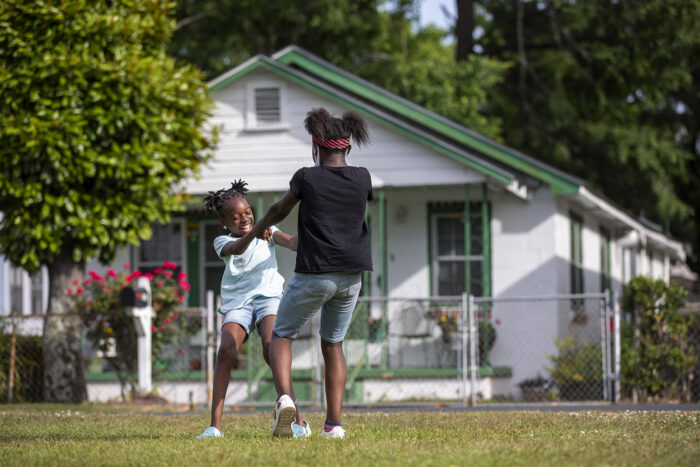
At the Southern Environmental Law Center, environmental justice means fighting for and working alongside communities and partners to find alternatives to polluting highway projects, to demand cleaner operating power utilities, and to fight to keep communities of color from being our nation’s dumping grounds. Environmental justice also entails holding polluting industries accountable. Our desire to shine a light on these fights — and victories — stems from our knowledge and belief that everyone should have clean water, clean air, a healthy environment, and the opportunity to participate in the decision-making process.
Who it affects
Land use and siting decisions that don’t consider the holistic health of communities and the environment continue to have a disproportionate impact on communities of color, rural communities, and areas where residents have less wealth. These decisions impact all parts of life for these communities, from access to clean water and transportation, to long-term health for current and future generations.
Why is environmental justice important?
When all of us are included in the environmental and land-use decision-making processes, it is more likely that all of our needs and ideas will be thoughtfully considered. When thinking of environmental justice, we think of clean water and air, accessible and affordable transportation, energy equity, and climate justice. All of these can be linked to basic, human rights. Having a clean, healthy environment to play, work, and flourish in is a right, not a privilege, and we believe the fight is one everyone should care about.
The issues at hand
Ensuring clean air
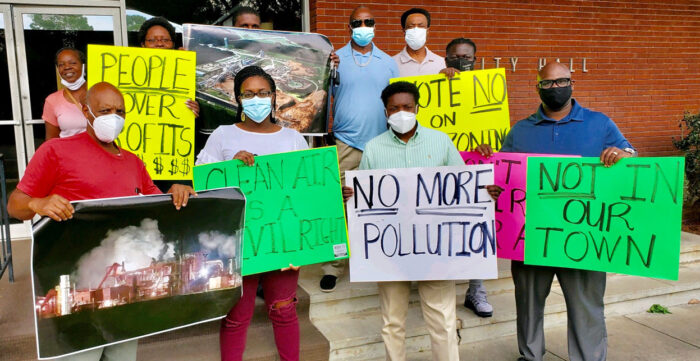
As a result of decades of racial segregation and residential redlining, polluting sources including fossil fuel plants, hog operations, cement factories, asphalt plants, and rock quarries are often sited in and around Black communities in particular. These industries irreparably change neighborhoods and pose significant environmental and health risks to surrounding residents. Learn more.
Ensuring clean water
Water pollution continues to cause a disproportionate, adverse impact on communities of color and lower wealth areas throughout the South. In many unincorporated communities, Black neighborhoods face threats to their well water and financial hurdles to getting connected to municipal services. In neighborhoods adjacent to industrial facilities and hog and other animal operations, residents face contamination of their local lakes, rivers, and streams. Learn more.
Stopping chemical waste
The number of chemicals created and in use by industry that wind up polluting our water and communities has grown dramatically in recent decades. Even though many of these industrial chemicals are individually dangerous, the bigger threat is that communities are never exposed to just one, but often have repeated exposure to multiple toxic pollutants. Places like landfills, hazardous waste sites, and other industrial facilities often affect the same people. Far too often, they are concentrated in communities of color and lower wealth communities. Learn more.
Confronting climate change
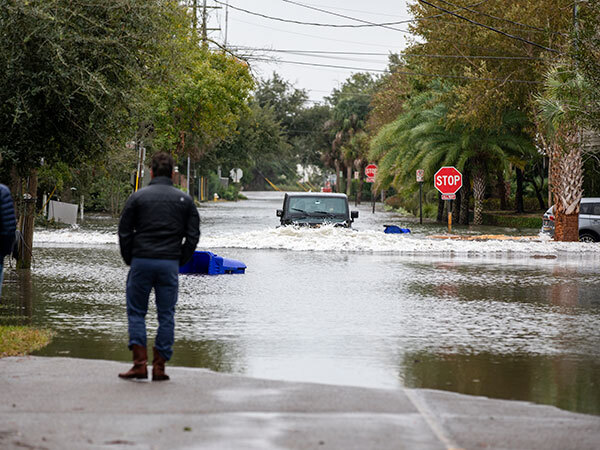
Not all of our Southern neighbors have the financial means to relocate when storms bear down, or when their homes become unlivable due to rising seas and frequent flooding. In many Southern communities, land has been passed down through generations in a way that isn’t neatly recorded in traditional deeds, making it difficult to receive federal emergency assistance in disasters. It is a critical and moral duty to help these communities adapt to rising seas or help them relocate to safer areas. Learn more.
What is environmental justice?
Learn more about how we’re partnering for a more equitable future.
Examples of environmental injustice
Access to clean water
Water pollution continues to disproportionately impact communities of color and lower wealth communities throughout the South. Members of communities adjacent to industrial facilities face contamination of their local lakes, rivers, and streams from permits handed out to polluting, harmful businesses, or from contaminated runoff associated with the industrial operation. In aging homes and schools, lead pipes pose drinking water risks that are most likely to negatively impact children of color.
Industrial air pollution
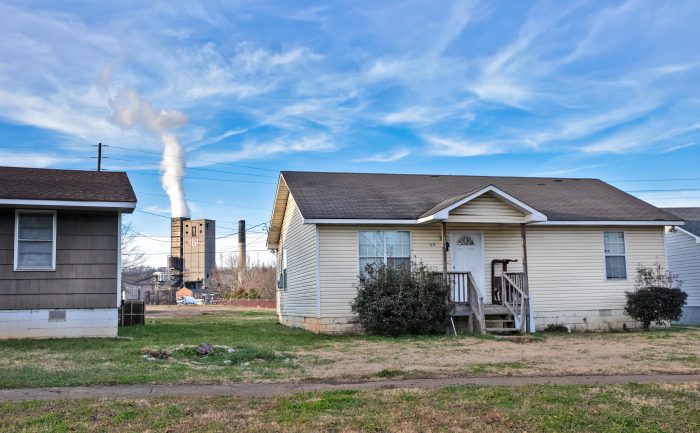
As a result of decades of racial segregation and residential redlining, polluting sources – including fossil fuel plants, cement factories, asphalt plants, and rock quarries – are often sited in and around Black communities in particular. These industrial operations pose significant environmental and health risks to surrounding residents. In addition to carbon emissions that contribute to the impacts of climate change, these facilities emit a range of air pollutants, including fine particulate matter and carcinogens. These pollutants can aggravate asthma and other respiratory conditions and be particularly harmful to children and the elderly.
Impact of environmental racism
Water and air pollution have some of the most dangerous impacts on Black communities and other communities of color. This type of environmental injustice is considered environmental racism.
- People living in hotspots of air and water pollution face elevated risks of serious health conditions such as cancer, lung disease, and asthma and other respiratory conditions. Vulnerable populations, especially young children and the elderly, are often the most impacted. Whole communities throughout the South are dealing with cancer clusters and other long-term and chronic health impacts due to significant levels of air and water pollution.
- Rising sea levels jeopardize homes and businesses, and therefore pose a threat to current livelihoods as well as generational wealth building. Coastal communities of color are also disproportionately burdened as new road and development projects are sited near them.
- Transportation remains the leading producer of carbon emissions throughout the South and impacts communities of color more than others. Due to historically and modern-day racist practices and policies, many highways are built near communities of color, placing the burden of increased air pollution on them. Transportation decisions impact everything from housing to access to employment opportunities and food.
Ways to stop environmental injustices before they start
The best way to fight environmental injustices is to drastically reduce or stop polluting air emissions and water discharges as well as halt bad zoning and siting decisions before they ever occur.
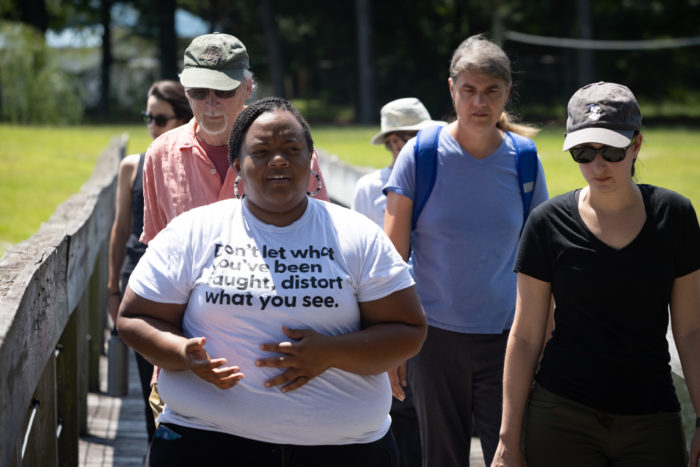
- Engage communities early. Communities are on the front lines of environmental injustice, but often lack the resources to fight polluters. This is why local governments must engage communities early and include them in land use and transportation decision-making processes.
- Propose alternatives. SELC works with consultants, experts, clients, agencies, community partners, and the regulated industry, where appropriate, to develop and propose less harmful alternatives to new roads, the destruction of wetlands and other waterways, and the implications for communities as we advocate for a robust public input processes to ensure the people most impacted by these decisions are heard.
- Hold polluters and politicians accountable. Along with our partners and affected communities, we seek to hold polluters and politicians accountable for the harm that occurs on their watches. This can include everything from closely monitoring their current priorities, to permit decisions, to ensuring they help clean up areas in which they’ve played a role in polluting.
Partnering against environmental injustice
Daily, communities throughout the South deal with the consequences of decades of harm and environmental racism. Injustice has been so prevalent that it’s become the norm. We work with community groups, national organizations, and policy makers to change that. Place-based alternatives and transparent, inclusive processes are key elements of our work with partners and clients. Learn more about SELC’s partners.
SELC: our mission
Environmental justice touches every area of our work at SELC. Our Environmental Justice Initiative works to ensure meaningful public participation toward more just outcomes. We leverage our resources to uplift communities in standing up to polluters already in their backyards, and to push back against threats on the horizon. Through strategic litigation, community outreach, and in seeking opportunities for legislative, regulatory, and policy reform to call out and end environmental racism, we are working to right these environmental wrongs and uplift communities striving to protect their way of life.
Be part of the solution. Take action today.
People and communities
Visit our People and Communities page to learn more about our environmental justice work and partnerships and to learn about current priorities and recent wins.
Diversity Equity and Inclusion
SELC recognizes that, due to historical patterns of racial and economic injustice, people of color and the impoverished in our region often face greater exposure to environmental harms. To better serve all communities that are facing environmental threats in the states where we work, SELC seeks to reflect greater racial and cultural diversity and embed equity and inclusiveness throughout our organization and the work we do, including among our board, leaders, staff, clients, and partners.
